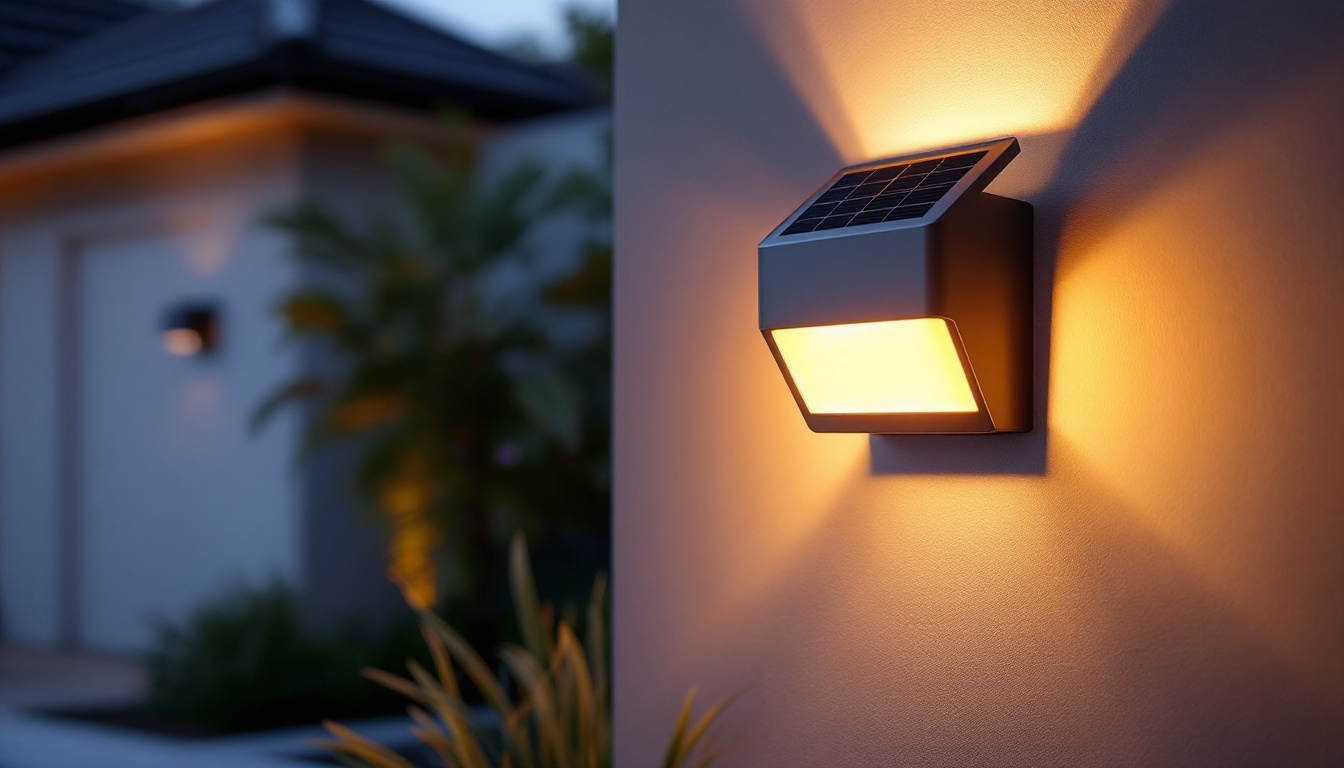
As the demand for energy-efficient and versatile lighting solutions continues to grow, LED lighting strips have become a popular choice among both residential and commercial clients. However, lighting contractors face a unique set of challenges when it comes to the installation and maintenance of these innovative products. Understanding these challenges is essential for contractors aiming to provide high-quality service and meet client expectations. This article delves into the top challenges faced by lighting contractors when working with LED lighting strips.
LED technology has advanced significantly over the years, offering a range of options that can cater to various lighting needs. However, the complexity of this technology can pose challenges for contractors who may not be fully versed in its intricacies. With the rapid evolution of LED technology, staying updated is not just beneficial; it is essential for professionals in the field. This includes understanding the energy efficiency ratings, lumens per watt, and the impact of color rendering index (CRI) on the overall ambiance of a space.
The market is flooded with different types of LED strips, each designed for specific applications. From color temperature to brightness levels, the options can be overwhelming. Contractors must be knowledgeable about the various products available to recommend the best solutions for their clients. This requires ongoing education and an understanding of the latest trends in LED technology. For example, RGB LED strips allow for dynamic color changes and can be controlled via smartphone apps, making them a popular choice for modern homes and entertainment spaces. Additionally, the emergence of smart LEDs that integrate with home automation systems is revolutionizing how lighting can be customized, adding another layer of complexity for contractors to navigate.
Proper installation of LED lighting strips is crucial for optimal performance. However, the techniques can vary significantly depending on the application. For instance, installing strips in a residential setting may differ from commercial applications. Contractors must be adept at assessing the specific requirements of each project and applying the appropriate installation techniques to ensure longevity and efficiency. This may include considerations such as heat dissipation, which can affect the lifespan of LED strips, and the choice of mounting surfaces that can enhance or diminish light output. Furthermore, understanding the electrical requirements and ensuring proper wiring is critical, as improper installation can lead to flickering lights or even damage to the fixtures.
Working with LED lighting strips involves various electrical considerations that can complicate installations. Understanding these factors is essential for ensuring safety and compliance with local regulations. Proper planning and execution can significantly enhance the performance and longevity of the lighting systems, making it imperative for contractors and DIY enthusiasts alike to familiarize themselves with the intricacies of LED technology.
LED strips typically operate at low voltage, which can necessitate the use of transformers or power supplies. Contractors must ensure that the voltage and current ratings of the strips align with the electrical systems in place. Miscalculations can lead to inadequate performance or even damage to the lighting strips, resulting in costly repairs or replacements. Additionally, it is important to consider the total wattage of the LED strips being installed. Exceeding the power supply’s capacity can lead to overheating and potential failure of the entire system. Therefore, using a power supply that offers a margin above the total wattage required is advisable to ensure reliable operation.
While LED lights are known for their energy efficiency, they still generate heat. Effective heat management is crucial to prevent overheating, which can shorten the lifespan of the strips. Contractors need to consider the installation environment and ensure that there is adequate ventilation or heat dissipation mechanisms in place. This could involve using aluminum channels or heat sinks that not only help in dissipating heat but also provide a polished, professional look to the installation. Moreover, the ambient temperature of the installation area should be taken into account, as higher temperatures can exacerbate heat buildup. In spaces where heat accumulation is a concern, integrating temperature sensors or using dimming controls can further enhance the longevity and performance of the LED strips.
One of the primary appeals of LED lighting strips is their versatility in design. However, this flexibility can also present challenges for contractors tasked with meeting client expectations.
LED strips can be cut to length, dimmed, and even programmed for color changes, offering a high degree of customization. While this is a selling point, it can also complicate the installation process. Contractors must be prepared to work with clients to determine the best configurations and ensure that the final product aligns with their vision.
Many clients wish to integrate LED strips with existing lighting systems or smart home technology. This requires a thorough understanding of both the new and existing systems to ensure compatibility. Contractors must be able to navigate these integrations seamlessly, which can be a significant challenge if they lack experience with smart technology.
Lighting contractors must navigate a complex landscape of regulations and standards when installing LED lighting strips. Understanding these requirements is essential for ensuring compliance and avoiding potential legal issues.
Local building codes often dictate specific requirements for electrical installations, including those involving LED lighting. Contractors must stay informed about these codes to ensure that their work meets all necessary standards. Failure to comply can result in fines, project delays, or even the need for reinstallation.
As sustainability becomes a priority for many clients, contractors must also be aware of environmental regulations related to lighting products. This includes understanding energy efficiency standards and disposal regulations for outdated lighting systems. Being knowledgeable in this area can enhance a contractor’s reputation and appeal to environmentally conscious clients.
Managing client expectations is a critical aspect of a lighting contractor’s role, especially when it comes to LED lighting strips. Clients may have misconceptions or unrealistic expectations about the technology, which can lead to dissatisfaction.
While LED lighting strips offer numerous benefits, such as energy efficiency and longevity, they also have limitations. Contractors must effectively communicate these aspects to clients, ensuring they understand what to expect in terms of performance and maintenance. This transparency can help prevent misunderstandings and foster a positive working relationship.
LED lighting strips typically require less maintenance than traditional lighting solutions, but they are not entirely maintenance-free. Contractors should provide clients with clear guidelines on how to care for their LED strips, including cleaning and troubleshooting tips. This proactive approach can enhance client satisfaction and lead to repeat business.
Cost is always a significant factor in any lighting project. For contractors, managing costs while delivering quality installations can be a balancing act.
While the initial investment for LED lighting strips may be higher than traditional options, the long-term savings in energy costs can be substantial. Contractors must help clients understand this cost-benefit analysis, emphasizing the value of investing in quality products that will pay off over time.
Unexpected expenses can arise during any project, particularly when working with new technologies. Contractors should build flexibility into their budgets to accommodate potential challenges, such as additional electrical work or unforeseen installation complications. This foresight can help prevent project delays and ensure client satisfaction.
The ongoing challenges in global supply chains can impact the availability of LED lighting strips and related components. Contractors must navigate these issues to avoid delays and maintain project timelines.
Finding reliable suppliers for LED products is crucial for contractors. A dependable supply chain ensures that contractors can access high-quality materials when needed. Building strong relationships with suppliers can help mitigate risks associated with supply chain disruptions.
Effective inventory management is essential for contractors to avoid shortages or overstock situations. Keeping track of inventory levels and anticipating future needs can help streamline operations and ensure that projects proceed smoothly. This requires careful planning and organization, particularly in a fluctuating market.
The lighting industry is continually evolving, with new technologies and trends emerging regularly. For contractors, staying informed about these changes is essential for maintaining a competitive edge.
New advancements in LED technology, such as tunable white lighting and smart controls, are changing the landscape of lighting design. Contractors must stay updated on these trends to offer clients the latest solutions and remain relevant in the industry.
Ongoing training and professional development are crucial for contractors looking to enhance their skills and knowledge. Participating in workshops, webinars, and industry conferences can provide valuable insights into emerging technologies and best practices. Investing in training not only benefits contractors but also enhances the overall quality of service provided to clients.
LED lighting strips offer numerous advantages, but they also present a unique set of challenges for lighting contractors. From understanding the technology and navigating electrical considerations to managing client expectations and staying compliant with regulations, contractors must be well-equipped to handle these obstacles. By investing in education, building strong supplier relationships, and staying informed about industry trends, contractors can position themselves for success in the evolving landscape of LED lighting. Ultimately, addressing these challenges head-on will lead to improved client satisfaction and a stronger reputation in the market.
As you navigate the complexities of LED lighting strips, choose a partner that equips you with the best in the business. At LumenWholesale, we provide contractors with spec-grade lighting products that meet the highest industry standards. Our commitment to quality, combined with unbeatable wholesale prices, ensures you can tackle any challenge with confidence. Say goodbye to inflated markups and hello to hassle-free bulk buying with free shipping. Elevate your lighting projects and exceed client expectations with the value and convenience offered by LumenWholesale. Discover our extensive selection and take advantage of the best value in wholesale lighting by visiting Wholesale Lighting at the Best Value.

Discover innovative strategies to future-proof your outdoor lighting projects with cutting-edge technologies and sustainable practices.

Illuminate your projects with confidence! Discover expert advice and innovative tips tailored for lighting contractors in our comprehensive guide to exterior lamps.

Discover expert insights and practical tips on selecting and installing exterior solar wall sconces.

Discover how choosing the best dimmer switch for LED lights can transform your lighting installation projects.